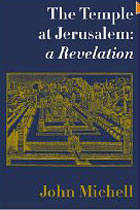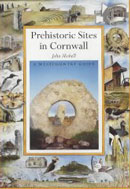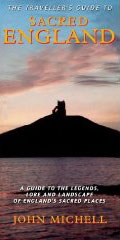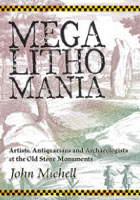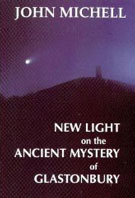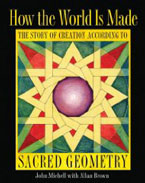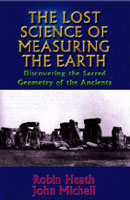|
News Headlines Digest
Week Ending Friday April 30 2010
“Newly-discovered bones answer questions about fossil primate locomotion”
ScienceBlogs (USA)
“Mount Khwaja, eyewitness to Iranian history
Press TV (Iran)
“Ancient Canadian flash flood plunged Earth into centuries of cold”
The Montreal Gazette (Canada)
“Xinjiang discovery provides intriguing DNA link”
XinhuaNet (China)
“Scuba diving volunteers discover underwater archeology”
VC Reporter (USA)
“12th century statue unearthed in Bangladesh”
Associated Press of Pakistan (Pakistan)
“Calakmul offers glimpse of ancient Maya history”
Seattle Post Intelligencer (USA)
“Iraq recovers ancient Ur clay tablets”
Press TV (Iran)
“Study suggests humans mated with Neanderthals”
Christian Science Monitor (USA)
“Ice Age theories warming up”
On Line Opinion (Australia)
“One of the more interesting results from recent research into climate is that for the past million years or so, the earth’s climate has shown a distinct 100,000 cycle of long ice ages punctuated by a brief, warm intergalacials. We are in one of those brief warm periods, an interglacial period that is called the Holocene.
This cycle can be seen in the temperature graph below taken from publically available Vostok ice core data. The ice cores are very long sections of ice in which ancient climates can be worked out by careful analysis of atomic isotopes of layers of ice, where each wafer thin layer represents a year.
Although there are other ways to determine past climatic conditions the Vostok cores (the site is in Antarctica but run by Russian scientists) are remarkable in being a connected track of temperatures of several hundred thousand years.
Temperatures over the most recent 420,000 years of earth’s history. Note that the graph time line is from left to right. All of recorded human history is in a couple of squiggles on the far right.
Also note that the temperature scale is relative and the zero line is just a handy
reference point. It has nothing to do with the freezing point of water.

Mark Lawson / On Line Opinion, Australia
Source: Vostok cores and Petit et al, 1999
Scientists have no real idea why the earth has been cooling over the past three million years and, in particular, are puzzled over the shift from 40,000 to 100,000 cycles. But until recently they thought they had a mechanism for explaining the current ice age cycle. Orbital cycles theory suggests the Holocene has another 14,000 or so, although the theory doesn’t have much to say about how interglacials end.
Then there is the comparative newcomer, solar magnetic theory, which is set to sweep orbital cycles off the board. For the evidence that the sun’s magnetic field affects climate is overwhelming.”
“Asteroid ice sheds fresh light on Earth life”
The Calcutta Telegraph (India)
“Archaeologists baffled over ‘bizarre’ Viking discovery”
Irish Examiner (Ireland)
“Iraqi antiquities officials receive Artifacts from Third Dynasty of Ur”
Azzaman (Iraq)
“Seimas clamps down on relic pillagers”
Baltic Reports (Lithuania)
“Ancient Egyptian city”
Zee News (India)
“Bizarre viking necklace find in North Clare”
The Clare People (Ireland)
“Research shows part of Alaska inundated by ancient megafloods”
University of Washington (USA)
“New research indicates that one of the largest fresh-water floods in Earth’s history happened about 17,000 years ago and inundated a large area of Alaska that is now occupied in part by the city of Wasilla, widely known because of the 2008 presidential campaign.
The event was one of at least four ‘megafloods’ as Glacial Lake Atna breached ice dams and discharged water. The lake covered more than 3,500 square miles in the Copper River Basin northeast of Anchorage and Wasilla.
This map shows the flood-formed dunes in the area of Wasilla, Alaska
Flood waters flowed from right to left across the image
The dunes reach more than 110 feet high and are spaced more than a half-mile apart

Michael Wiedmer, University of Washington
The megaflood that covered the Wasilla region released as much as 1,400 cubic kilometers, or 336 cubic miles, of water, enough to cover an area the size of Washington, D.C., to a depth of nearly 5 miles.
That water volume drained from the lake in about a week and, at such great velocity, formed dunes higher than 110 feet, with at least a half-mile between crests. The dunes appear on topographical maps but today are covered by roads, buildings and other development.”
“Iraqi man stumbles across 2,000-year-old artifacts”
Earth Times (UK)
“Artefacts are 40,000 years old”
The Mercury (Australia)
“A palace hidden in the forest”
Deccan Herald (India)
“Roman sculptures withdrawn from auction amid fears they are stolen”
The Guardian (UK)
“Antiquities smuggling arrests in Sparta”
Athens News Agency (Greece)
“Archaeologists: Stolen Antiquities Conference – Fighting for our Heritage”
Global Arab Network (Syria)
“Excavations near Reading show evidence of Boudicca”
BBC News (UK)
“Weapons finds shed light on ancient life in North”
The Montreal Gazette (Canada)
“Researchers in the Northwest Territories have discovered a ‘treasure trove’ of ancient weapons and other artifacts — including a spear-throwing device more than 2,000 years old — that were unlocked from melting ice patches high in the Mackenzie Mountains.
‘”We’re just like children opening Christmas presents. I kind of pinch myself’, said Tom Andrews, an archeologist at the Prince of Wales Northern Heritage Centre in Yellowknife, lead researcher with the International Polar Year Ice Patch Study.
In prehistoric times, the high-altitude oases of ice attracted caribou herds seeking cool refuges from heat and insects during the summer months.
Indigenous hunters learned that the caribou ‘were, in effect, marooned on these ice islands and took advantage’ by targeting the animals as a vital source of food, clothing and bone implements.”
“Evangelists claim to have found Noah’s ark – 4000m up mountain”
The Sydney Morning Herald (Australia)
“Bhaitbari relics under threat from treasure hunters”
The Assam Tribune (Assam)
“Ancient language discovered at Teotihuacan in Mexico”
BBC News (UK)
“Archaeologists Unearth New Finds near Strumica in Eastern Macedonia”
Balkan Travellers (Bulgaria)
“Cops mere ‘relics’ in hunt for stolen treasures”
Daily Times (Pakistan)
“Mesolithic cave discovered in Pagaralam”
Antara News (Indonesia)
News Headlines Digest
Week Ending Sunday April 25 2010
“Neanderthals may not be completely extinct”
Digital Journal (UK)
“Archaeologists unearthed ancient city in the Egyptian eastern borders”
Global Arab Network (Syria)
“America’s architectural heritage: Calusa Key, a 2000 year old island paradise”
The Examiner (USA)
“Ancient Dakhmas found in Iran”
Press TV (Iran)
“Roman altar stones unearthed at Scottish cricket ground”
BBC News (UK)
“Second find of ancient dug-out canoe in Arklow by same man”
Irish Times (Ireland)
“Dawn of Urban Life Uncovered in Syria”
Discovery News (USA)
“Before the invention of the wheel and writing, a prehistoric civilization in northern Mesopotamia engaged in trade, processed copper and developed the first social classes based on power and wealth.
Evidence of the civilization that formed the basis of urban life in the entire Middle East lies beneath three large mounds about three miles from the modern town of Raqqa in Syria, according to U.S. and Syrian archaeologists.
The mounds, the tallest standing some 50 feet high, cover about 31 acres and enclose the ruins of Tell Zeidan, a proto-urban community dating from between 6000 and 4000 B.C.”
“Rare 600 BC silver coin unearthed”
Sify News (India)
“Ancient graves found in Iran Burnt City”
Press TV (Iran)
“The Mesoamerican connection: the Toltecs, artisans, scholars, priests and fearsome warriors”
The Examiner (USA)
“Scientific heritage of Muslim world on display in London”
Today’s Zaman (Turkey)
“Archaeologists unearth 6th century Ikea-style temple”
The Daily Telegraph (UK)
“De-busted meditative Buddha statue found near Sikkal”
The Hindu (India)
“Study details at least four epic droughts in Asia”
AFP / Yahoo News (France / USA)
“First Pict throne in 1,000 years”
Aberdeen Press & Journal (Scotland)
“The Mesoamerican connection: the Toltecs, artisans, scholars, priests and fearsome warriors”
PhysOrg (USA)
“French archaeolgists begin digs in Iraq”
IOL / Reuters (South Africa)
“Egypt dig uncovers coins more than 2,250 years old”
France 24 (France)
“Archaeologists have uncovered bronze coins bearing the image of ancient Egyptian ruler King Ptolemy III in an oasis south of the capital, the culture ministry announced on Thursday. Also found by the Egyptian team were necklaces made of ostrich eggshell, it said.
The 383 items dating back more than 2,250 years were found near Lake Qarun in Fayum oasis, around 120 kilometres (75 miles) from Cairo, the ministry said in a statement, adding that they were in excellent condition.
An undated handout picture released by Egypt’s Supreme Council of Antiquities
shows two coins dating back to the era of Ptolemy III 222-246 BC
discovered in an Egyptian oasis, south of the capital Cairo
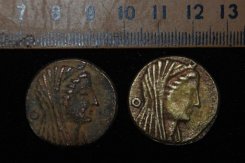
Supreme Council of Antiquities, Egypt
The coins weighed 32 grams (1.12 ounces) each, with one face depicting the god Amun and the other the words “king” and “Ptolemy III” in Greek along with his effigy, the statement said.”
“Ancient tracks reveal trail of a giant scorpion”
Aberdeen Press & Journal (Scotland)
“Lice hang ancient date on first clothes”
Science News (USA)
“Bulgarian Builders Almost Ruin Thrace Archaeology Site”
Novinite (Bulgaria)
“Archaeologists discover ancient Kuskokwim home”
Anchorage Daily News (Alaska)
“‘Ancient Greek Coin Hoards’ exhibition in Athens”
Athens News Agency (Greece)
“Head-ramming dino had ‘gears’ in skull”
ABC Science News (Australia)
“Mysterious Desert Lines Were Animal Traps”
Discovery News (USA)
“30-million-years-old worms munched on whale bones”
OneIndia (India)
“Ancient Hereford ditch was ‘royal city boundary'”
BBC News (UK)
“Archaeological Sites Mark Location of Farming from 10th Millennium BC”
Global Arab Network (Syria)
“Excavations began in the various archaeological sites that once housed farming communities, including Tel al-Abar 3 sites on the left bank of the Euphrates River (northern Syria) which dates back to the 10th millennium BC.
Assistant Director of the Syrian Department of Archaeology and Museums Thaer Yerte said excavations at the site revealed information about the communities that settled on the banks of the Euphrates, uncovering two different areas that include three communal buildings and dozens of circular houses built from limestone and paved with pebbles from the river.
The structures contained various flint tools such as blades, knives, sickles, arrow tips and hatchets, tools used for leatherwork and crafting straw mats, stone mills and pestles, pottery fragments and animal bones and horns, Yerte added.”
“Egypt Pictures: Roman-Style Mummy, Tombs Found”
National Gepgraphic News (USA)
“Peruvian Mummies, Seashells Share Historical Climate Insight”
NewsWise (USA)
“Buddhist artifact found in Chandrapur village”
Sakaal Times (India)
“Dog-Sized Dinosaur Had Thick, Head-Butting Skull”
Live Science (USA)
“4,000-year-old lentils ready to be planted in Kütahya”
Today’s Zaman (Turkey)
“Plants grown from lentils discovered during a dig in Kütahya and believed to be thousands of years old will soon be planted, scientists have announced.
Speaking to the press, Dr. Nüket Bingöl of the biology department at Dumlup?nar University said the lentils, which were found in the Seyitömer district during a dig by the university’s archaeology department, were germinated four months ago using a tissue culture method.
Bingöl stated that Dumlup?nar was working in cooperation with other Turkish universities on this project and that they planned to conduct DNA analyses and other scientific evaluations of the lentil plants as they grew, seeing a critical opportunity to analyze the characteristics of plants from millennia ago.”
“ASI to survey protected monuments”
Express Buzz (India)
“Ancient stones older than Stonehenge discovered on Dartmoor”
The Daily Telegraph (UK)
“Roman sculpture found in Macedonia”
Press TV (Iran)
“Hobbit debate goes out on some limbs”
ScienceNews (USA)
“Archaeologists Unearth Early Roman Sculpture Fragments at Stobi Site”
Balkan Travellers (Bulgaria)
“Chinese pigs ‘direct descendants’ of first domesticated breeds”
PhysOrg (USA)
“Another ancient centre of learning discovered”
Hindustan Times (Times)
“Ancient Hominids Had Humanlike Grip”
Discovery News (USA)
News Headlines Digest
Week Ending Sunday April 18 2010
“4,000-year-old relics spur new look at Sa Huynh culture”
Thanh Nien Daily (Viet Nam)
“Italians study Iran’s Pasargadae”
Press TV (Iran)
“Syrian Archaeologists: Tower Tombs Unearthed in Palmyra”
Global Arab Network (Syria)
“Unearthed: 2,000-yr-old study centre”
Hindustan Times (Times)
“Archaeologists have unearthed the remains of an ancient Buddhist study centre at Telhara village in Bihar’s Nalanda district. The centre is believed to be nearly 2,000 years old.
A 34-metre-long prayer hall, residential cells for monks, images of Buddha, pottery and a stone plaque were among the discoveries made during excavation at the 40-foot high Bulandi mound over the past four months.
The prayer hall is dotted with Buddha statues. Archaeologists believe this could be the same prayer hall Chinese traveller Hiuen Tsang mentions in his accounts.”
“Belize Classic Maya history is embedded in commoners’ homes”
The Reporter (Belize)
“Priceless Roman sculpture excavated in Stobi”
MINA (Macedonia)
“Shipwrecked Roman lead to help study neutrino”
Russia Today (Russia)
“As of today there are 1116 known Potentially Hazardous Earth-Crossing Asteroids”
SpaceWeather.com (USA)
“Copper–Stone Age footwear discovered on the territory of Armenia”
PanArmenian News (Armenia)
“Archaeologists to probe newly-discovered tunnels”
Express & Star (England)
“‘X-Woman’ coexisted with Neanderthals and modern humans 40,000 years ago”
24 World News (USA)
“Discover Inca Ruins near Lake Titicaca”
Living in Peru (Peru)
“Stories behind the maps that shaped the modern world”
The Yorkshire Post (England)
“‘Java Man’ takes age to extremes”
Science News (USA)
“New age estimates for Homo erectus fossils on the Indonesian island of Java have physical anthropologists scratching their crania. After convincing most of their colleagues that H. erectus may have persisted on the Indonesian island of Java as recently as 30,000 years ago — late enough to have coexisted in Asia with modern humans for more than 100,000 years — anthropologists presented new analyses April 14 suggesting the fossils in question may actually predate Homo sapiens by hundreds of thousands of years.
It all depends which radiometric method you use to assess the fossils’ age, New York University anthropologist Susan Antón reported at the annual meeting of the American Association of Physical Anthropologists.
Antón and an Indonesian colleague lead a team that first announced in 1996 that sediment at two H. erectus sites on Java dates to between 50,000 and 30,000 years ago. Those ‘remarkably young’ dates, based on analyses of radioactive elements in fossil-bearing sediment, suggest that H. erectus survived well into the era dominated by modern humans, Antón said. Many researchers now accept those dates.”
“Stalagmite reveals carbon footprint of early Native Americans”
PhysOrg (USA)
“Ancient Texts Show Similarities between Arabic and Ugaritic Languages”
Global Arab Network (Syria)
“Egypt-Switzerland Sign Agreement on Lost Antiquities”
AriRang News (South Korea)
“Tomb Of Ken-Amun, Royal Scribe, Unearthed In Egypt”
Discovery News (USA)
“Deciphering the Indus script: challenges and some headway”
The Hindu (India)
“Drunken Tourists Damage Chile Archaeological Site”
LAHT (Venezuela)
“Do Dartmoor’s ancient stones have link to Stonehenge?”
New Scientist (UK)
“Ancient pre-human skeleton may contain shrunken brain”
Tehran Times (Iran)
“French Guianan coastal savannas: a landscape shaped by humans and by nature”
AlphaGalileo (Belgium)
“The coastal savannas of French Guiana dotted with thousands of small mounds have given up some of their secrets, thanks to an interdisciplinary European collaborative research project, financed by two CNRS programs.
The researchers discovered that these mounds are agricultural raised fields, vestiges of a pre-Columbian agricultural system constructed over 900 years ago. Above all, the researchers showed that following the abandonment of this system, these well-drained islands in seasonally flooded environments were colonized by other organisms (animals and plants) that have maintained these small elevated structures up to the present day.
This study confirms first of all that pre-Columbian farmers built the vast complexes of raised fields found in Guianan savannas. This coastal fringe, considered inhospitable, is subjected to seasonal flooding (an alternation of periods of rain and drought). The Amerindians constructed mounds to make well-drained soil, permitting intensive sedentary agriculture.”
“Fresh excavation at site of Vikramshila ruins”
Samay Live (India)
“Hundreds of rare Roman pots discovered by accident off Italy’s coast by British research ship”
Daily Mail (UK)
“300-year-old shoes found in castle wall during restoration”
The Local (Germany)
“Ancient city yielding new clues in Michoacan, Mexico”
Los Angeles Times (USA)
“In Pictures: ‘Egypt Archeology Bahariya Oasis'”
M & C News (Scotland)
“Al-Masry Al-Youm digs up Fayoum tomb raiders”
Al-Masry Al-Youm (Egypt)
“Ancient Americans took cold snap in their stride”
Springer Select (Germany)
“Jeweled mummy uncovered in Egypt”
Press TV (Iran)
“What happened at Angkor Wat”
The Washington Post (USA)
“The great Khmer capital of Angkor, in what is now Cambodia, was for a time the largest preindustrial city in the world. Modern-day visitors to the ruins at Angkor Wat can see, in addition to the ornately carved Buddhist temple, remnants of a massive and intricate system of waterways, dikes and holding ponds.
But the city declined, finally succumbing to Thai invaders in 1431. A group of researchers say they believe they have at least a partial answer to the mystery of its collapse: Two major droughts, and some follow-up flooding, probably weakened the city’s agricultural base and left it vulnerable to disease and invasion.
‘The Angkor droughts were of a duration and severity that would have impacted the sprawling city’s water supply and agricultural productivity, while high-magnitude monsoon years damaged its water control infrastructure’, the researchers wrote in a recent Proceedings of the National Academy of Sciences.”
“Syrian-French archaeologists unearthed a Byzantine mosaic panel”
Global Arab Network (Syria)
“Brain Parts Found in Ancient Human Ancestor”
Discovery News (USA)
“Hundreds of Ancient Fossils Handed to Government”
Tempo Interaktif (Indonesia)
“Mummified Baboons in British Museum May Reveal Location of the Land of Punt”
Heritage Key (UK)
“Ancient thick-shelled turtle discovered in coal mine”
Tehran Times (Iran)
“No action taken to preserve frescoes”
Ceylon Daily News (Sri Lanka)
News Headlines Digest
Week Ending Sunday April 11 2010
“Archaeologists Uncover Site Untouched for 6,000 Years”
The Epoch Times (USA)
“The great African Meroë empire at the Louvre Museum”
Afrik (France)
“Wealth of Prehistoric Life Found in African Amber”
Softpedia(Romania)
“Arizona’s mammoth hunters — out with a whimper or a bang?”
EurekAlert (USA)
“Baringo residents want their ‘ancestor’ back”
The East African (Kenya)
“CSU Archaeologist Discovers Ancient Lost City in Mexico”
INDT News (USA)
“A Colorado State University archaeologist and his team have discovered the ruins of an ancient urban center in the heart of the Purépecha Empire in Lake Pátzcuaro Basin, located in the central Mexican state of Michoacán.
At the time of European contact, the Purépecha Empire – sometimes called the Tarascan Empire – controlled much of western Mexico with a mutually fortified frontier shared with their rivals, the Aztecs to the east.
The settlement may be as large as 5 square kilometers and dates to A.D. 1000-1520. Initial results suggest the peak occupation of the newly discovered urban center occurred just prior to the formation of the Purépecha Empire, further indicating that results from the study may yield new clues regarding the empire’s formation.”
“Oldest fishing rites in the Arabian Peninsula found in Umm Al Qaiwain”
WAM (United Arab Emirates)
“ICE returns 1,400-year-old pre-Colombian skulls to Peruvian government”
Ethiopian Review (Ethiopia)
“Pre-Stonehenge Megaliths Linked to Death Rituals”
Discovery News (USA)
“125,000 years ago first human settlement began in Oman”
GAN (Oman)
“Giza’s Cave Underworld Sealed Shut”
iNewsWire (UK)
“The entrance to Egypt’s cave underworld has been sealed shut just two years after its modern day discovery. Access to the tomb leading to these natural caverns, located beneath the famous Pyramids of Giza, is now blocked by a metal gate set in concrete. This came in the wake of revelations in the press last summer that British explorer and writer Andrew Collins had in March 2008 located a previously unknown opening into a natural cave system long thought to exist at Giza, but never before explored in modern times.
The excavations inside the tomb – coordinated by Dr Zahi Hawass, Secretary General of Egypt’s Supreme Council of Antiquities – uncovered a series of subterranean rooms and galleries thought to have been used in the past as a necropolis for the interment of bird mummies.
Despite these recent discoveries, Dr Hawass has publicly denied that any natural cave system extends from the tomb, stating that what exists beneath the ground are catacombs carved by human hands, something that Mr Collins disagrees with strongly.
‘We have dozens of clear photos, along with film footage, that make it clear that extending from the Tomb of the Birds is an extensive series of cave passages that almost certainly reach beneath the main pyramid field’, Collins said.”
“Countries unite for repatriation of looted cultural heritage”
Athens News Agency (Greece)
“Partial skeletons may represent new hominid”
Science News (USA)
“Relics found in Dinajpur date back to 10th century”
The Daily Star (Bangladesh)
“Archaeologists Excavate Previously Inaccessible Site in Border Region”
Balkan Travellers (Bulgaria)
“Research Review 3 Climate cycles and a Mammoth Mystery”
Tucson Citizen (USA)
“South Indians in Roman Egypt?”
Frontline (India)
“Researchers Shed Light on Ancient Assyrian Tablets”
Science Daily (USA)
“Egypt urges states to cooperate on artefact return”
Reuters Africa (South Africa)
“Nuclear Reactor in Use 1.8 Billion Years Ago”
The Epoch Times (USA)
“The Gabon Republic in Africa is rich in uranium. In 1972, A French factory imported uranium ore from Oklo, Gabon, and found to its surprise that the uranium had already been extracted.
Scientists around the world gathered in Gabon to explore this phenomenon. They found that the site where the uranium was found is a highly technical underground nuclear reactor beyond the capabilities of our present scientific knowledge. This nuclear reactor came into being 1.8 billion years ago and was operational for about 500,000 years.
Studies indicate that the uranium mine’s nuclear reactor was several miles in length. However, for such a huge nuclear reactor, the thermal impact to its environment was limited to 40 meters (about 131 feet) on all sides. Even more astonishing, the radioactive waste materials have still not migrated outside the mine site. They are held in place by the surrounding geology.”
“Moa bones and adze head unearthed”
TVNZ News (New Zealand)
“King Tut Wore Orthopedic Sandals”
Discovery News (USA)
“Archaeologists Discover Pre-Historic Tumuli in Central Serbia”
Balkan Travellers (Bulgaria)
“Archaeologists find clues to the appearance of modern human”
ECN Magazine (USA)
“New findings from an excavation site in Spain are generating heated debate among palaeontologists and archaeologists about precisely when the Neanderthals disappeared and were replaced by the first anatomically modern human beings. The research, carried out by a team from the Centre for Prehistoric Archaeological Heritage Studies at the Universitat Autonoma de Barcelona, and published in the Journal of Human Evolution, pinpoints the transition to between 34,000 and 32,000 years ago, and supports the hypothesis that the two species did not interact or coexist.
The archaeologists carried out their research at a site called Cova Gran in the south eastern Pyrenees in Catalonia, Spain, that was inhabited by Neanderthals and modern humans at different times in the past. Covering a total surface area of 2 500 square metres, Cova Gran is a rarity for archaeologists; sites of this ‘transitionary’ type are crucial to palaeontologists and archaeologists as they offer them a chance to trace the development of the human species.”
“New Species Of Giant Lizards Unearthed In the Philippines”
Thaindian News (Thailand)
“Archaeology: Hidden treasure”
Nature (UK)
“Indus-like inscription on South Indian pottery from Thailand”
The Hindu (India)
“Abundant food and leisure time: Site tells story of what Hilton Head Island was like 4,000 years ago”
Island Packet (USA)
“Excavations campaign in Utica reveals details of life of early Phoenicians”
Tunisia News (Tunisia)
“Indus Valley east theory challenged”
The Calcutta Telegraph (India) –
“A study of hundreds of ancient Indus Valley civilisation sites has revealed previously unsuspected patterns of growth and decline that challenge a long-standing idea of a solely eastward-moving wave of Indus urbanisation. Researchers at the Institute of Mathematical Sciences (IMS), Chennai, combined data from archaeology, radiocarbon dating, and river flows to study how settlements around the Indus Valley region had evolved from around 7000 BC till 1000 BC.
Their analysis of 1,874 Indus region settlements has shown that the Indus urbanisation had three epicentres — Mehrgarh in present-day Baluchistan, Gujarat, and sites along an ancient river called the Ghaggar-Hakra in Haryana and Punjab. The findings, published in Current Science, a journal of the Indian Academy of Sciences, dispute suggestions by international researchers that farming and urbanisation in the region was driven by a “wave of advance” moving eastward.”
“Dig looks at society just before dawn of urban civilization in the Middle East”
EurekAlert (USA)
“When did the First Settlers Come to Iceland?”
Iceland Review (Iceland)
“Turkish environmentalists trust law for Allianoi settlement”
Hurriyet Daily News (Turkey)
“Skull CT scans recreate face of woman in ancient world”
The Hindu (India)
“In Syria, a Prologue for Cities”
The New York Times (USA)
“Did a comet trigger a mini Ice Age?”
Cosmos Magazine (Australia)
[After an Ice Age lasting almost 100,000 years, the Earth was starting to warm again about 13,000 years ago. But suddenly the global temperature took a sharp dive, and another severe cold spell endured for the next 1,300 years.
Known as ‘The Younger Dryas’, temperatures fell dramatically by up to 8° C, and there has been much speculation as to what might have caused it. But now Bill Napier, a professor at Cardiff University’s Astrobiology Centre, has posed a credible theory.
‘Earth collided with debris from a vast comet, measuring 50 to 100 km across, that had wandered into the inner Solar System some 30,000 years ago before breaking up. The impact unleashed a firestorm that blanketed the atmosphere with ash and dust, reducing heat and light from the Sun, Napier suggests in Monthly Notices, a journal of the Royal Astronomical Society.’ Reported also in the recent issue of Cosmos Magazine, Napier has suggested that the phenomenon known to astronomers as the Taurid Complex consists of the remnants of the giant comet, and said that Earth’s orbital path still crosses that of the remaining debris field, which ‘includes at least 19 of the brightest near-Earth objects’. He’s usually right… : – Ed]
“Bronze Age finds at Guernsey airport”
BBC News (UK)
News Headlines Digest
Week Ending Sunday April 04 2010
“Archaeologists searching for clues to history of worship on mountain”
The Daily Yomiuri (Japan)
“A New Human Relative from the Siberian Mountains”
Spiegel Online (Germany)
“UM digs find 10,000-year-old Native oasis”
The Missoulian (USA)
“Nagaon excavations reveal ceramic tradition”
The Assam Tribune (Assam)
“Missing link between man and apes found”
The Daily Telegraph (UK) –
[There seems to be a lot of new discoveries in the area of supposed human evolution recently. Last week we heard that a new species of hominid that is different from both modern humans and Neanderthals has been found in a cave in Siberia. Now we have the long-sought-after “missing link” between humans and apes announced in South Africa – also discovered in a cave.
If you place these alongside the discovery in recent years of the so-called Hobbit”, a 3ft high new species of ancient human found on the island of Flores, Indonesia, and the many credible sightings of “wild men” in remote parts of the world over thre last 150 years or so, it’s beginning to look like there were many different types of human-like creatures existing alongside each other in ancient times. And, oddly, with many remote forrested and mountainous areas still remaining unexplored to this day in many parts of the world, some of these creatures may still be surviving alongside us, albeit in the many and varied remote pockets of wilderness that modern humans have not trodden in historical times… : – Ed]
“Archaeologists: Sea relics in Xisha too fragile”
China Daily (China)
“Orkney Venus goes on tour”
The Press & Journal (Scotland)
“Two-feet-long Buddha idol found in Orissa’s Jajpur district”
Orissa Diary (India)
“Stone-age man’s earliest trail through Sharjah uncovered”
The National (United Arab Emirates)
“China steps up underwater archaeology”
The People’s Daily (China) –
[Since the discovery in 1987 of a 600-year-old sunken ship off the coast of mainland China, archaeologists there have been pursuing the underwater cultural heritages around their coasts. One of their main marine archaeology projects involves the excavation of the Ming Dynasty ship, the “Nan’ao No.1”, and a related general study of the legendary “Silk Road on the Sea”. They are now seeking cooperation from the marine archaeologists of other countries in that area: – Ed]
“Plan in works to salvage remnants of N.C. shipwreck”
Pilot Online (USA)
“Macedonian Archaeologists Discover Ancient Coins near Ohrid”
Balkan Travellers (Bulgaria)
“Teotihuacan Lineage at Tikal Studied”
Art Daily (USA)
“Angkor lesson for cities”
The Calcutta Telegraph (India)
“Clouds May Hold Key to Why Early Earth Didn’t Freeze Over”
Space.com (USA) –
“A paradox about the climate of the early Earth that has been plaguing scientists for nearly 50 years may have a new solution. The so-called ‘young’ sun paradox — first proposed by Carl Sagan and his colleague George Mullen in 1972 — refers to the fact that the Earth had liquid oceans for the first half of its more than 4-billion-year existence despite the fact that the sun was likely only 70 percent as bright in its youth as it is now. A lower solar luminosity should have left Earth’s oceans frozen over, but there is ample evidence in the Earth’s geological record that there was liquid water — and life — on the planet at the time.”
“Dinosaur claw found by workmen on Harrow on the Hill”
Harrow Observer (England)
“Stone Age Scandinavians unable to digest milk”
EurekAlert (USA)
“Dig Days: Once again: camels and horses at the Pyramids”
Al-Ahram Weekly (Egypt)
“Syria to build protection zone around old Damascus”
People’s Daily (China)
“Information-age math finds code in ancient Scottish symbols”
Scientific American (USA) –
[The Picts, who inhabited the northernmost areas of the British Isles, were the only peoples to have fully stopped the march of the Roman legions as they sought to subjugate the whole of the islands of Britain. They were remarkable for not having a written language, much like the Druids, who also left no written record of themselves. But a recent study focussing on the symbols they did leave carved on stones and jewellry looks set to reveal something of that elusive record.
A paper published by The Royal Society at the end of last month entitled “Pictish symbols revealed as a written language through application of Shannon entropy”, concludes that the Pictish symbols, far from being random sequences, do in fact “exhibit the characteristics of written languages”. Last year a different study applied a similar technique to the previously-undecipherable script of the ancient Indus Valley civilisation, coming to the conclusion that it was also a written language: – Ed]
“History of mounds date back thousands of years”
Today’s THV (USA)
“Old bones that never lie”
Ha’aretz (Israel)
“In the footsteps of the Bronze Men”
Al-Ahram Weekly (Egypt)
“Ancient Roman gluten death seen”
ANSA (Italy)
“Inca cemetery holds brutal glimpses of Spanish violence”
Science Daily (USA)
“The Antikythera Mechanism Research Project”
Cardiff/Athens Universites (Cymru/Greece)
[In October 1900, Captain Dimitrious Kondos was leading a team of sponge divers near the the island of Antikythera off the coast of Greece. They noticed a shipwreck about 180 feet below the surface and began to investigate. Amongst the artifacts that they brought up was a coral-encrusted piece of metal that later archaeologists found was some sort of gear wheel.
The rest of the artifacts, along with the shape of the boat, suggested a date around 2000 years ago, which made the find one of the most anomalous that had ever been recovered from the Greek seas. It became known as The Antikythera Mechanism.
In 2006 the journal “Nature” published a letter, and another paper about the mechanism was published in 2008, detailing the findings of Prof. Mike G. Edmunds of Cardiff University. Using high-resolution X-ray tomography to study the fragments of the anomalous Antikythera Mechanism, they found that it was in fact a bronze mechanical analog computer that could be uased to calculate the astronomical positions of the Moon as seen from the Earth: – Ed]
Part of the Antikythera Mechanism

Antikythera Mechanism Research Project
More news stories about The Antikythera mechanism
“Antikythera Mechanism – World’s earliest existing analogue computer”
HotnHit News (India)
“Decoding an Ancient Computer: Greek Technology Tracked the Heavens”
Scientific American (USA)
“Watch a video explaining the Antikythera mechanism”
Nature (UK)
|











